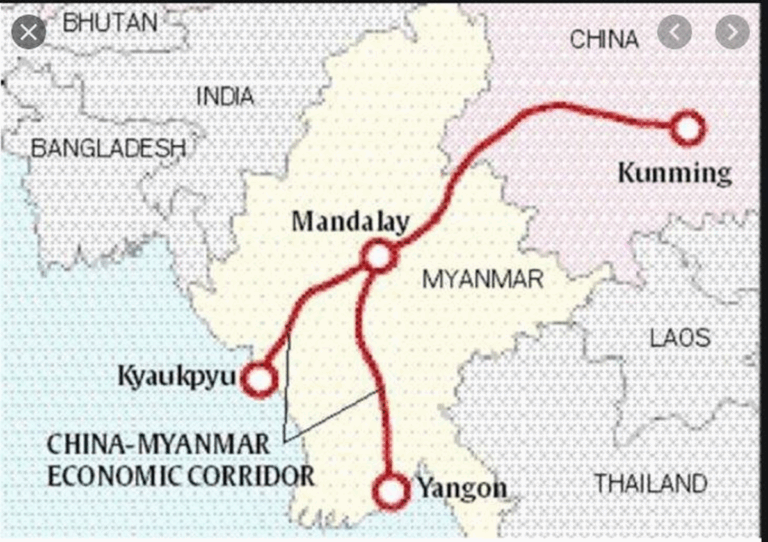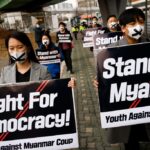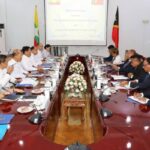China’s Belt and Road in Southeast Asia: A Comparative Look at Myanmar, Laos, and Cambodia
China’s Belt and Road Initiative (BRI) has significantly influenced Southeast Asia, with Myanmar, Laos, and Cambodia serving as focal points for its infrastructure-driven diplomacy. While these nations have embraced BRI projects to bolster economic development, they also grapple with challenges related to debt sustainability, environmental concerns, and geopolitical implications.
Myanmar: Strategic Connectivity Amidst Political Turmoil
Myanmar's engagement with the BRI is epitomized by the China-Myanmar Economic Corridor (CMEC), which aims to link Kunming in China to the Bay of Bengal via Kyaukphyu in Rakhine State. A cornerstone of this corridor is the Kyaukphyu Deep-Sea Port, a joint venture between China's CITIC Group and Myanmar's government. Upon completion, the port is expected to handle significant cargo volumes, enhancing China's access to the Indian Ocean and reducing reliance on the Strait of Malacca .
However, Myanmar's political instability poses risks to the CMEC's success. The military junta's control has led to international sanctions and internal resistance, potentially delaying project timelines and affecting investor confidence. Additionally, there are concerns about the environmental and social impacts of such large-scale infrastructure projects.
Laos: From Landlocked to Land-Linked
Laos's most notable BRI project is the Vientiane–Boten Railway, a 414-kilometer high-speed rail line connecting the capital to China's Yunnan province. This railway is part of the broader Kunming–Singapore rail network, aiming to integrate Laos more deeply into regional trade routes .
Despite its potential, the railway has faced criticism. The project is primarily financed through Chinese loans, with Laos holding a minority stake. This arrangement has raised concerns about Laos's growing debt burden and the equitable distribution of benefits. Moreover, the project's implementation has been marred by forced relocations and inadequate compensation for affected communities .
Cambodia: Infrastructure Development Amidst Controversy
Cambodia's BRI involvement includes the development of the Dara Sakor Special Economic Zone, which encompasses a deep-water port, an international airport, and resort facilities. This project has attracted significant Chinese investment and aims to boost Cambodia's manufacturing and tourism sectors .
However, the Dara Sakor project has been fraught with controversy. The 99-year lease granted to the Chinese developer has raised sovereignty concerns, and reports of land disputes and human rights abuses have surfaced. Additionally, the Lower Sesan 2 hydropower dam, another BRI project, has been criticized for inadequate consultation with Indigenous communities and forced relocations without proper compensation .
While Myanmar, Laos, and Cambodia have leveraged China's BRI to advance infrastructure development, the associated challenges cannot be overlooked. Balancing economic growth with environmental sustainability, social equity, and political stability remains crucial for these nations as they navigate their paths within the BRI framework.
Thank you for reading! Visit us anytime at Myanmar.com for more insights and updates about Myanmar

 U.S. FREEZES $1 BILLION IN MYANMAR GOVERNMENT FUNDS FOLLOWING MILITARY COUP
U.S. FREEZES $1 BILLION IN MYANMAR GOVERNMENT FUNDS FOLLOWING MILITARY COUP
 YOUTH AND RESISTANCE: THE ROLE OF MYANMAR’S NEXT GENERATION IN DEMOCRACY MOVEMENTS
YOUTH AND RESISTANCE: THE ROLE OF MYANMAR’S NEXT GENERATION IN DEMOCRACY MOVEMENTS
 Myanmar Earthquake – A Nation in Crisis Amidst Disaster
Myanmar Earthquake – A Nation in Crisis Amidst Disaster
 SpaceX Cuts Starlink Access at Myanmar Scam Compounds
SpaceX Cuts Starlink Access at Myanmar Scam Compounds
 UN Special Rapporteur Report on Myanmar Rights
UN Special Rapporteur Report on Myanmar Rights
 East Timor’s ASEAN Gamble: Mending Ties with Myanmar Junta
East Timor’s ASEAN Gamble: Mending Ties with Myanmar Junta
